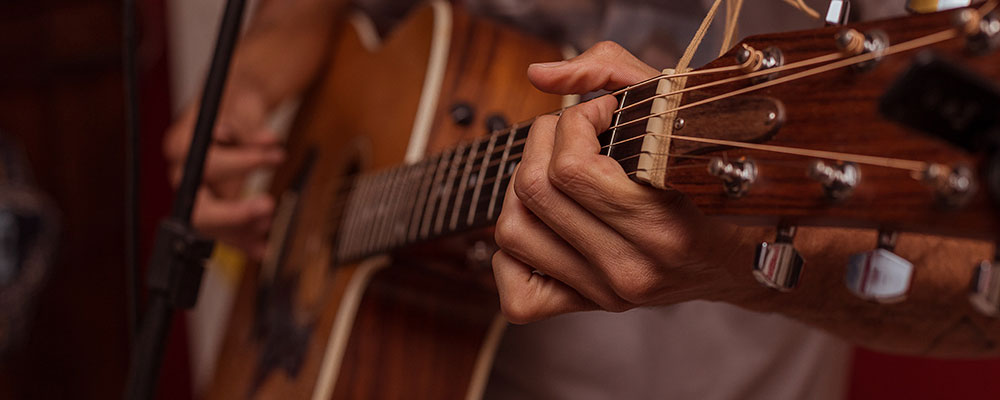Josué Castellano · Music Producer
ESP +34 617 56 46 18 (WhatsApp/Telegram)
RUS +7 909 797 15 35 (Viber)
I help other musical creators to professionally shape and present to the world the gift that God has given them
Do you want to receive this content in your email?
Subscribe to receive my content, news and special offers!
Thank you!
Check your inbox to confirm your email
(If you can't find it, look in Spam)
ETZETERA – Something in the way (cover) EN
You can now listen to my cover/tribute of “Something in the way”, by Nirvana, on your favorite platform.
Without a doubt, one of my favorite bands and the one that has influenced me the most. I spent hours listening to their albums in the 90s!
IN LOVING MEMORY OF KURT COBAIN
- Full video on YouTube ► https://youtu.be/7T-AzUl0dz0
LINKS TO LISTEN TO THE FULL VERSION:
DOWNLOAD THIS SONG FOR JUST €1 ON:
Original song by Nirvana.
Arrangements, vocals, mix & mastering: ETZETERA PRODUCTIONS by Josué Castellano
How to record an acoustic guitar
I would say that the guitar is the instrument most used by songwriters around the world, especially the acoustic guitar, the classical guitar and, lately it has become very popular, the ukulele. If you want to record your guitar at home or are going to do it in a studio, I leave you some aspects to keep in mind.
1. THE RECORDING PLACE
- If you are going to record in a studio you don’t have to worry.
- If you record at home, look for a completely quiet place that is as empty as possible to prevent the sound from bouncing off the walls.
- If you notice that there are a lot of reflections, a good idea is to play in front of an open closet, a sofa, a shelf full of books, whatever…
2. THE SOUND DESIGN OF YOUR SONG
- If your production is going to be full of instruments and the guitar is just another element that will go unnoticed, you can record a single MONO track.
- If you want to get the best result in the mix, record in STEREO.
- I recommend that you take two identical shots. The small differences between one track and another will make it sound spectacular.
- If the song is very difficult, record a take with two microphones.
- If you have multiple guitars in your song, use both techniques. For example, record rhythm guitar in STEREO and guitar solos in MONO.
- The important thing is that you are clear about what you want the final result to be and transmit your vision of this result to the person in charge of mixing your song.
3. MICROPHONE PLACEMENT
- Depending on where you place the microphone(s), it will totally change the sound of your guitar.
- In my opinion, to get a clean, bright and full sound, it is best to place the microphone at 15-20 cm and pointing at the 12th fret.
- The closer you bring the microphone to the hole in the body, the deeper the sound will be. Try until you find the result you like.
- When using two microphones, you can place them in different positions to get different nuances from your guitar.
4. THE TYPE OF MICROPHONE
- Even if your guitar has a jack input, I DON’T recommend that you use it, unless that’s the sound you’re looking for or you have no other option.
- I usually use a small membrane condenser microphone, although I often also use a large membrane microphone.
- When I’m looking for a “dirtier” sound I use the dynamic microphone.
- Take a look at the post in which I explain each type of microphone HERE.
3 mistakes to avoid as an artist
Many independent artists who are trying to break into music keep making mistakes that take them away from their goals. I am going to tell you about some of these mistakes so that from today you can start avoiding them and you can get a little closer to your goals.
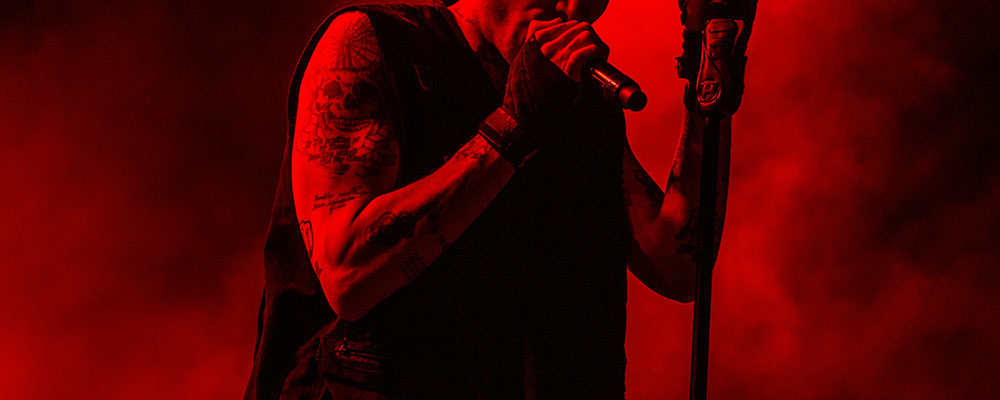
1. NOT HAVING A DEFINED ARTISTIC BRAND
- A personal brand is much more than having a logo.
- Find what sets you apart and enhance it to stand out from the crowd.
- It’s okay to be inspired by other artists, but be genuine.
- Make your sound unique too, make the music you like even if it is not what “everyone” listens to.
2. NOT KNOWING YOUR AUDIENCE/FANS
- Listen to what your audience / your fans want.
- Worry more about the quality of your followers than the quantity.
- Interact with your followers: reply to comments, comment on their posts, go live,…
3. HAVING NO STRATEGY OR PLANNING
- It is not enough to have a good song and upload it to Spotify, Apple Music, etc.
- If you need ideas, I have another post in which I propose an 8-week strategy to release your new single. Check it out!
And you, have you made or are you still making any of these mistakes? Leave a comment.
3 ideas to promote your music
Uploading your songs to Spotify, Apple Music, etc. and publishing a post, the day of the release, on your social networks like “Now available”,“Out now“, is not enough.
Before you start making stories or “spam” the whole world begging them to listen to your new song, let me give you 3 ideas to promote your next release.
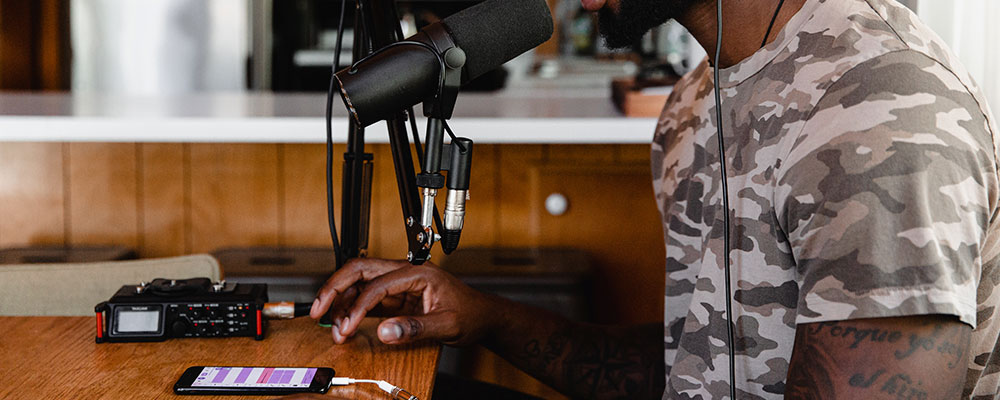
1. MAKE A WHATSAPP OR TELEGRAM GROUP
with your friends and your most loyal followers.
- Let them know that they are the first to hear your new song.
- Of course, if you ask them, they will share your music.
2. CREATE SHORT VIDEOS WITH YOUR SONG
for Instagram, YouTube and TikTok.
- Make about 10 videos a month.
- Take care of the image and sound quality. It’s not enough to be professional, you have to look like it!
- Republish the one that receives the most views.
3. MAKE A CAMPAIGN WITH SMALL INFLUENCERS
that have between 5,000 and 20,000 followers.
- Send them a gift directly to their house (cap, t-shirt, hoodie,…) so they can promote your music.
- Find someone who has an audience that might like your songs.
And you, what other ideas can you think of? Leave your comment.
WERITTA – Unstoppable (EN)
Congratulations on the release Weritta! You really are unstoppable!
WERITTA’s third single “Unstoppable” has already been released. Once again I’ve had the pleasure of doing the instrumental part, the mixing and the mastering of the song.
Follow this amazing artist and listen to “UNSTOPPABLE” on your favorite platform:
WERITTA – 5 minutes (EN)
Happy release day Weritta!
Today “5 minutes” is out, the second single by WERITTA, in which I have had the pleasure of collaborating one more time doing the instrumental part, mixing, and mastering the song.
Listen to “5 minutes” on your favorite platform
And follow this artist on Instagram / Twitter to get to know her better and learn more about her music.
Studio headphones. Which ones to choose?
There are different types of studio headphones and each one has special characteristics for a specific task. If you are a singer or music producer and you are thinking of buying one, you need to know them and in this post, I will explain their characteristics, what each type is for, and some recommendations.

CLOSED HEADPHONES
These types of headphones are designed so that sound does not escape outside, so they are ideal for recording in front of a microphone since they prevent the music you listen to as a reference from being recorded again through the microphone.
If you want to record yourself at home or you are a producer and you’re going to record other artists, you need one of these.
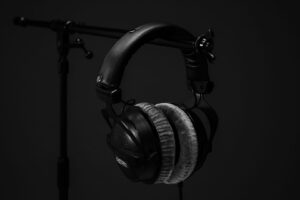
My recommendations:
- AKG K52 <40$
- Audio Technica ATH-M30X <80$
- Beyerdynamic DT 770 pro <140$
OPEN (AND SEMI-OPEN) HEADPHONES
They are designed for post-production, especially for the mixing and mastering phases, since the sound is more defined and open throughout the entire frequency range, they are more comfortable and do not tire the ear as much.
If you use headphones for mixing or have to spend a lot of time working on them, you need one.
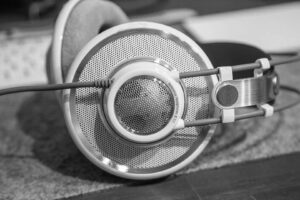
Do not use them to record in front of the microphone!
My recommendations:
- AKG K240 MkII <70$
- Beyerdynamic DT 990 PRO <140$
- Sennheiser HD 660 S <400$
CHEAP HEADPHONES
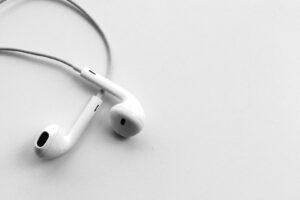
It may seem silly when we are talking about studio headphones, but they are the most used by most people to listen to music.
I recommend using them to compare the result of your mix and detect possible errors.
You can use AirPods or any non-professional headset, even the ones that are given to you with your mobile…
TECHNICAL ASPECTS
Impedance: Electrical resistance of your circuit to the sound source.
Sensitivity: The ability they have to generate sound.
Frequency response: The ability they have to reproduce each type of frequency. “Flat” response means that all frequencies are reproduced with the same intensity.
If you get one of these headphones or want to recommend others, I would love to read your opinion in the comments.
5 types of microphones for singers. Which one to choose?
Today there is a wide variety of types, brands, prices, and stores to choose from and this can make it difficult for you to make decisions if you want to buy a microphone.
I want to show you the 5 most common types that exist and what to use them for.
DYNAMIC MICROPHONES
They’re cheap, rugged, and sound great when recording vocals, percussion, or guitar and bass amps. They are used in concerts and don’t need 48v phantom power.

Essential if you perform live!
My recommendations:
- SHURE SM58 (voice) <150$
- SHURE SM57 (instruments) <150$
- SHURE SM7B (studio voice recording) <400$
LARGE-DIAPHRAGM CONDENSER MICROPHONES
They’re the most used in professional studios. They’re more sensitive than dynamic or ribbon microphones, so they’re ideal for vocals and soft sounds. They use 48v phantom power, so you need an audio interface to connect it to your computer.
If you want to record yourself in your own home studio, you need one of these!
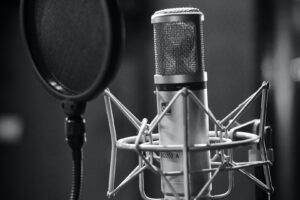 My recommendations:
My recommendations:
- NEEWER NW800 <50$
- RODE NT1A <160$
- AKG 4040 <500$
- NEUMANN T102 <600$
USB LARGE-DIAPHRAGM CONDENSER MICROPHONES
The sound quality is not comparable to an analog microphone, but there’re very good options on the market, and by connecting via USB you don’t need an audio interface to connect it to your computer.
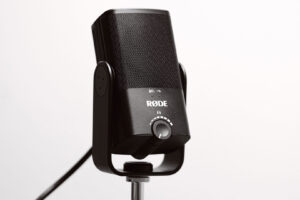 Some have a headphone output, something very practical for recording and traveling with your equipment.
Some have a headphone output, something very practical for recording and traveling with your equipment.
My recommendations:
- The t.bone SC 420 USB <60$
- RODE NT-USB <150$
SMALL-DIAPHRAGM CONDENSER MICROPHONES
They have a great response and are very good for realistic stereo recordings and for acoustic instruments (classical or acoustic guitar, ukulele, violins, etc.)
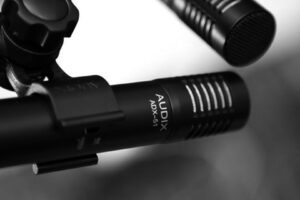 If, in addition to your voice, you want to record instruments in stereo, I recommend getting a pair of this type or combining one of these with a large-membrane microphone.
If, in addition to your voice, you want to record instruments in stereo, I recommend getting a pair of this type or combining one of these with a large-membrane microphone.
My recommendations:
- AKG P170 <80$
- Sennheiser MKE 600 <300$
RIBBON MICROPHONES
They were popularized by artists like Elvis, Frank Sinatra, etc. They’re more fragile and should never be used with 48v phantom power. They have a warm vintage sound and smooth out the high frequencies.
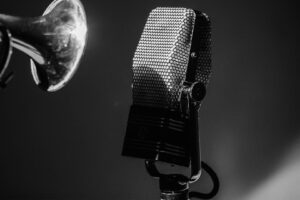 If you are looking for this type of sound, this is your microphone.
If you are looking for this type of sound, this is your microphone.
My recommendations:
- The t.bone RM 700 <100$
- Beyerdynamic M160 <500$
If you get one of these microphones or want to recommend others, I would love to read your opinion in the comments.
Strategy to release your songs
As an independent artist you‘re going to have to take care of everything related to your musical career, you‘re going to have to constantly learn, work hard and have a lot of patience. And let me tell you what, THIS IS AMAZING!
Uploading your songs to Spotify, Apple Music, etc. is not enough. In order for your music to reach as many people as possible, I want to share with you a strategic plan to help you prepare for the release of your next song(s).
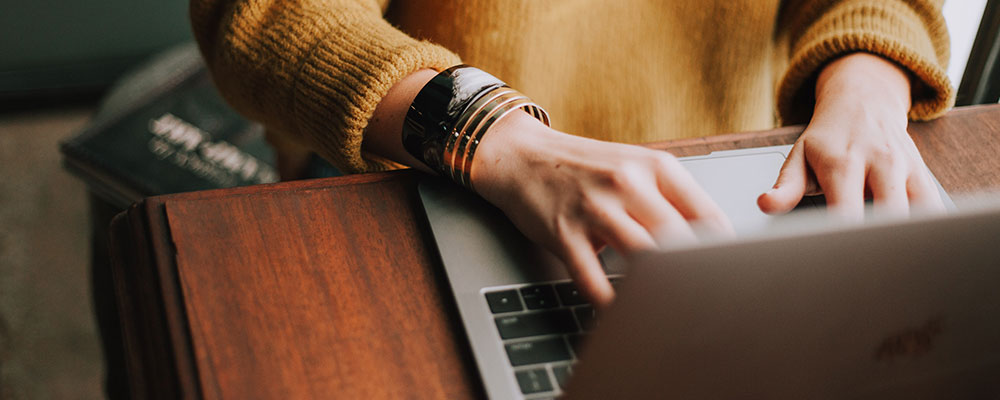
FIRST OF ALL
- Make sure your song sounds professional (mixing and mastering).
- Record a video clip.
6-8 WEEKS BEFORE RELEASE
- Upload your music to Spotify, Apple Music, etc.
- Claim your artist profile on Spotify for Artists.
- Plan the content with which you will promote your song.
4-6 WEEKS BEFORE RELEASE
- Create or update your EPK (Electronic Press Kit).
- Write a press release.
- Write to Music Blogs.
3-4 WEEKS BEFORE RELEASE
- Pitch your song for the official Spotify Playlists.
- Pitch your song for other independent Playlists.
1-2 WEEKS BEFORE RELEASE
- Make a pre-save campaign.
- Promote your song on Instagram and other social networks.
AFTER THE RELEASE
- Promote your song on digital platforms.
- Participate in interviews and live shows.
- Send your music to radio stations and online stations.
If this strategic plan helps you, I would love to read your experience. And if you need help with the production, mixing or mastering of your song, do not hesitate to contact me and tell me about your project.
Independent artist or sign with a record label
A few years ago, signing with a record label was the only way to have a music career.
Nowadays, carrying out your musical career as an independent artist is very possible thanks to new trends, streaming platforms, new technologies and tools, social networks and the quality of home-studios.
I leave you some pros and cons so you can choose which option is best for you.

PROS OF BEING AN INDEPENDENT ARTIST
- 100% of the profits. By not having a contract with anyone, you keep all the profits from sales, streaming, merchandising, royalties, licenses, etc.
- Creative control. You can maintain the authenticity of your music, since there are no outsiders telling you what to do.
- Full control of your career. You decide what decisions to make, what tours to do, how to distribute your music, how to promote it, etc.
- 100% of your rights. If you compose, produce and record your own music, you keep all copyrights. If you work with a music producer, you will only share them with him on the terms you both agree on.
CONS OF BEING AN INDEPENDENT ARTIST
- You pay all expenses. All the budget for production, distribution, promotion, etc comes out of your pocket, in addition to the work time that it entails.
- Few contacts. Being an independent artist, you don’t have as many contacts and media reach as the labels.
PROS OF SIGNING WITH A RECORD LABEL
- Higher budget. Record labels usually have a large budget to finance music production, marketing, touring and everything related to your career.
- Contacts and influences. Labels have the right industry contacts that can grow your career.
- Planned marketing. Being professionals, they know exactly how to do the marketing that helps improve your audience.
CONS OF SIGNING WITH A RECORD LABEL
- Loss of rights. Since they produce your music, they keep the recording and mastering rights, so they have more control over the decisions.
- Less percentage of profits. The distribution percentages for the artists are very small, since the label has to pay for everything (production, mastering, marketing, etc.)
- Less control. Signing with a stamp will make you lose control of how things are done. Even the style of your music will be influenced. You should review the terms of the contract well and consult with a lawyer to avoid problems.
Whichever option you think is best for your career, make sure the quality of your music is professional, both in songwriting and production.




